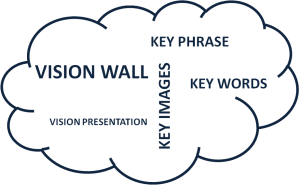Before I leave the world of work-for-hire games production for something a little different, I thought I’d jot down a bunch of guidelines I’ve encountered over the years that help with making games. These are especially true when making games for publishers or similar clients and whilst I’d imagine anyone out there with a lot of experience does these anyway, they might just jog a few new thoughts.
51 Random Guidelines for Making Games
1) Hit your milestones.
2) I’m serious, hit your bloody milestones. Get the work done with a good 20% of the milestone left for bug fixing and ephemera. Plan with these deadlines in mind.
3) Start every project with the belief that you can make a great game.
4) Start every project with the goal of getting it out on time and under budget.
5) Great games and on-time delivery aren’t mutually exclusive if you make careful decisions and employ good production methods.
6) Prioritise your work. Take into account your design team and your stakeholders’ wishes here. They’re both right, they’re both wrong, you need to help them find accord.
7) Mediate. Your most important job is preventing talented teams from tearing each other apart.
8) Don’t forget about audio.
9) Budget and schedule for the pitch process
10) Understand your game’s vision and sell it to the rest of the team at all times.
11) Understand your game’s vision and sell it to your stakeholders at all times.
12) Manage your relationships. Be courteous to all the people you work with or work for.
13) If you’re working with a publisher, get in contact with the brand manager on your game and get them on your side. They have the capacity to torpedo you in the final stages of dev.
14) Aim for a healthy profit in everything you do but don’t be short sighted. A well-executed but barely profitable job can extend your company’s portfolio and be just as valuable as a result.
15) Remember that it’s okay to ask for more money when your stakeholders ask for more stuff.
16) Make sure you’re developing your team. Personal reviews are important two-way conversations between you and the folk who keep you in a job.
17) People like to be rewarded with control over their work. Give people goals but let them work out how to achieve them.
18) Use pre-production to build something, even if you throw it away. If you finish pre-pro with nothing but a bunch of beautiful documents you’ve done it wrong.
19) Documents are not very useful if you don’t keep them up to date.
20) Keeping documents up to date is an absolute bitch so make fewer documents.
21) Prepare. For meetings, for conversations, for the start of every day.
22) Sometimes you need to micromanage stuff. Do it for as short a time as possible or it will kill you and your project.
23) Be prepared to pivot when things need to move in a new direction.
24) If you’re making a big change be prepared to spend a vast amount of time convincing the team that it’s the right thing to do. It’s vital you bring them with you. Do this with one-to-one’s, email, IM – do this with your general presence on the team.
25) Be aware of the wider market – your job goes beyond the current game you’re making and the games you like to play.
26) Be aware of your team’s limitations and guide your project accordingly. Aim to push your team but don’t rely on unrealistic expectations.
27) You are primarily a facilitator.
28) Don’t rely on new tech until it’s proven out.
29) Talk, and encourage your team to talk. I’ve never seen a team that’s buzzing produce work that’s late or subpar, EVEN IF ALL THEY’RE BUZZING ABOUT IS A FUNNY CAT ON THE WEB.
30) Get QA on board as early as you can afford them
31) Don’t ignore the bug list.
32) Understand your game’s brand.
33) Asking for help is okay. You are at your weakest to your team when it becomes clear you don’t know what you’re doing, NOT when you’re asking for help.
34) Get really good at listening.
35) Ignore the haters on the Internet (unless they’re right).
36) Become a great storyteller.
37) Make mistakes and make them early. You’re not trying if you don’t fuck something up.
38) Learn from your mistakes.
39) Keep your word.
40) Remember that there are times when your stakeholders are NOT actually trying to screw you.
41) Become a sales person.
42) Admit it when you’re wrong.
43) The little stuff matters.
44) If someone asks you a question and you don’t think you know the answer, remember that it’s okay to say that you’ll get back to them. Just make sure you do get back to them.
45) Understanding the personal motivations of your stakeholders is important. It helps you get to the bottom of the why, which is important for when you start to work on the how.
46) Work on your presentation skills.
47) Tell the people above you what’s happening on a regular basis.
48) If you work for a bunch of dicks, make sure you log these conversations by email
49) Sometimes, any decision is better than no decision.
50) Sometimes thinking things through first makes more sense.
51) Enjoy it, you’re making games ffs.

